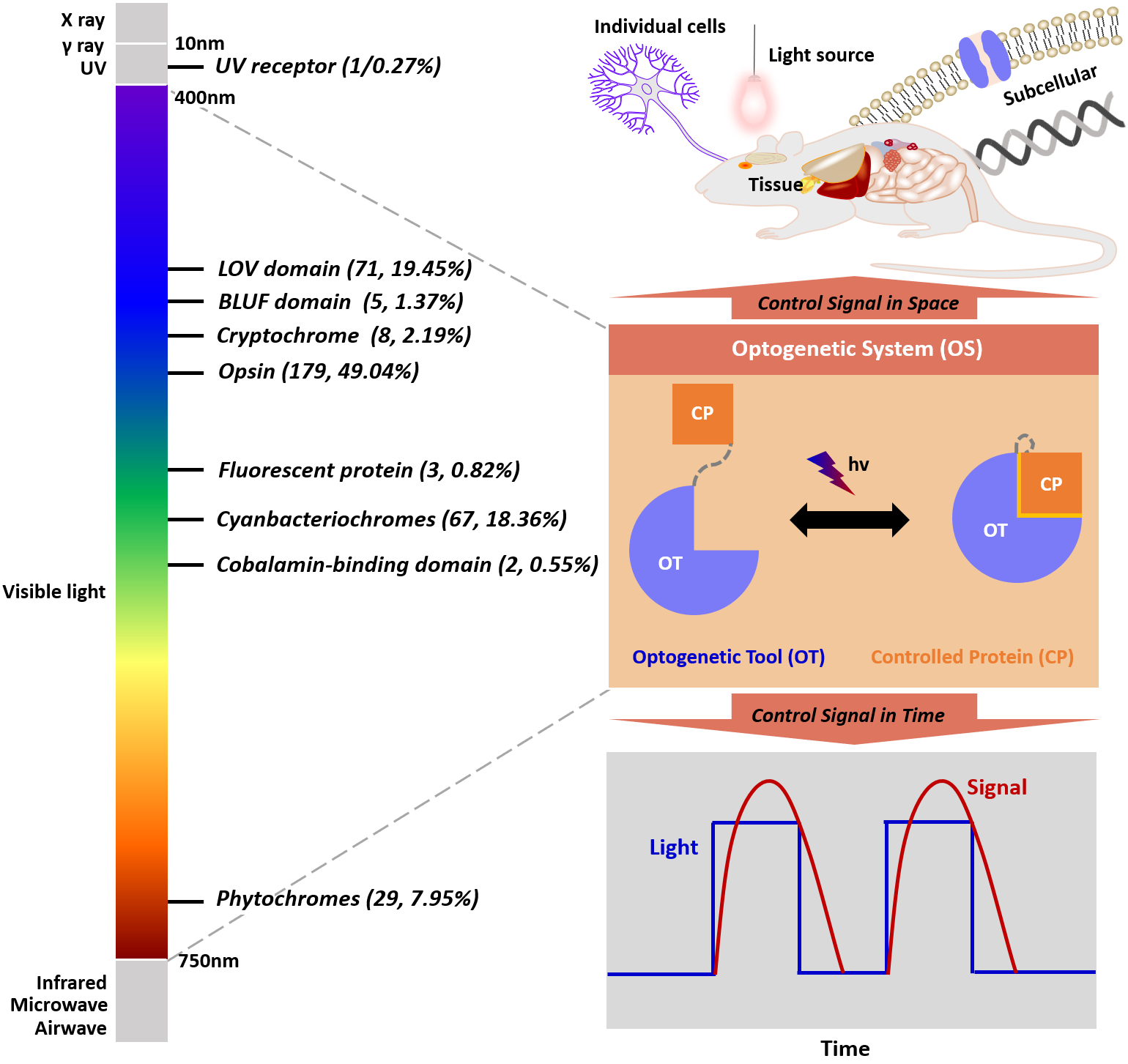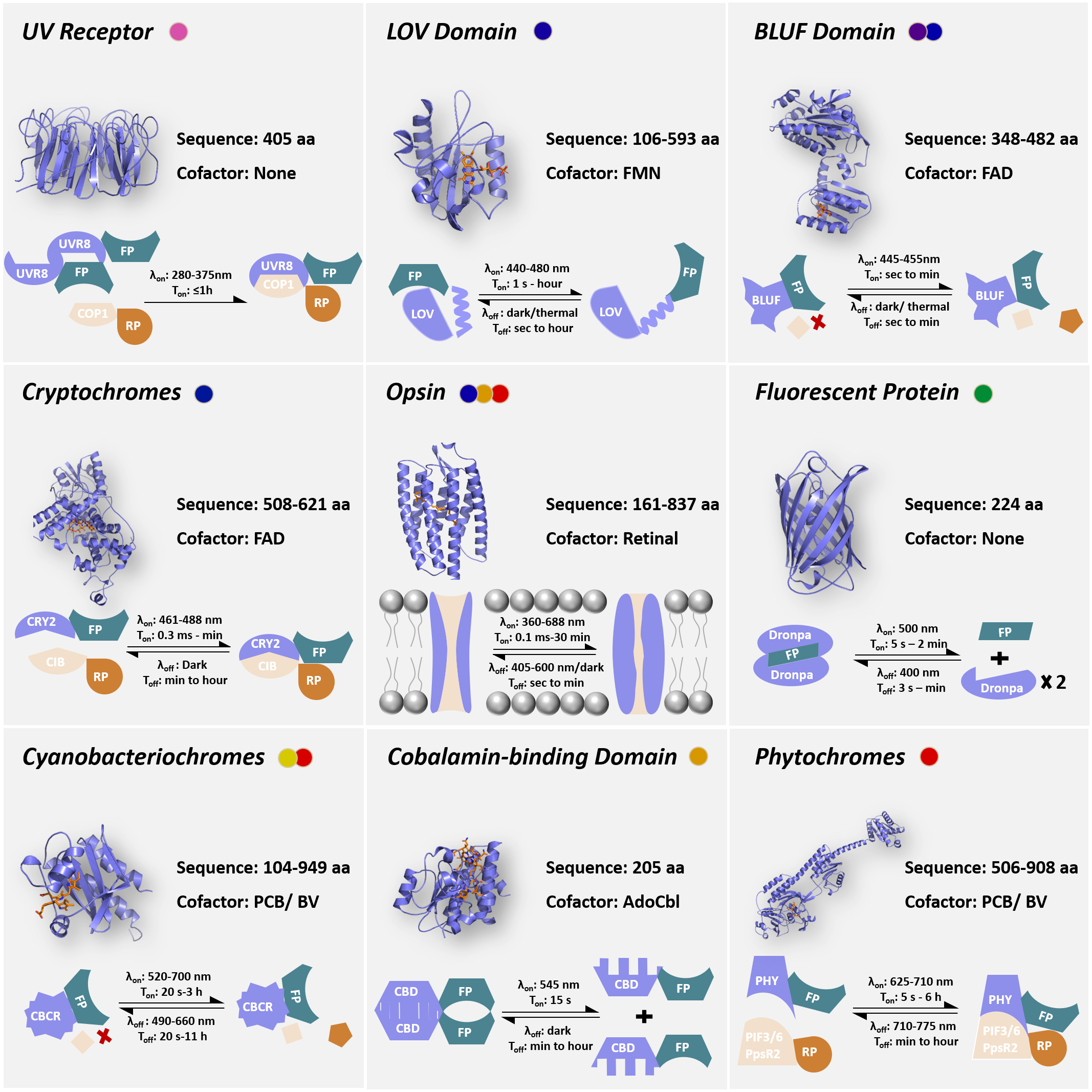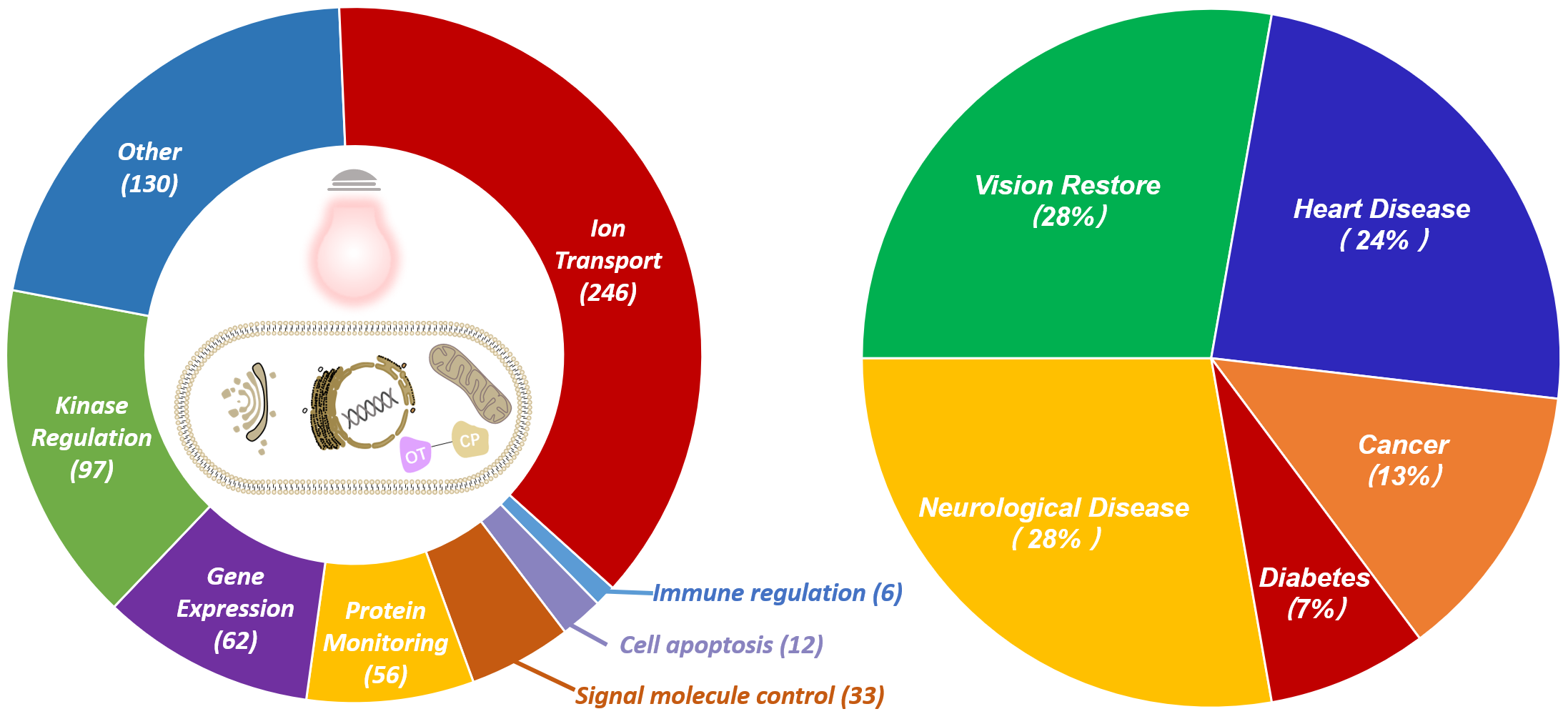| Optogenetic System (OS) |
|---|
What is an OS?
In 2021, Dr. Karl Deisseroth, Dr. Peter Hegemann, and Dr. Dieter Oesterhelt were awarded the ‘Albert Lasker Basic Medical Research Award’ in recognition of their prominent contributions to the discovery of the light-sensitive proteins (also known as photoreceptors) and their application to optogenetic system (OS). Photoreceptors (such as opsins) are discovered in most species (from microbe to plant, and to animal), which provide these living organisms with an ability to sense and respond to different wavelengths of light (Figure 1). Based on the discovered photoreceptor, a huge number of OSs have been developed to enable the precise control (spatial and temporal) of a variety of signaling pathways and molecular function. As a result, these newly developed OSs have revolutionized the research in neuroscience, immunotherapy, and beyond.
A typical OS (Figure 1) is composed of two main modules of Optogenetic Tool (OT) and Controlled Protein (CP, also known as the cellular function protein). On the one hand, the repertoires of OTs have been largely enriched owing to the refinement of “sequence-structure-function” relationship in the major component (photoreceptor) of OT. On the other hand, a large number of CPs have been successfully integrated into different OSs, which are found closely related to various cellular activities. With the rapid expansion of OT and CP data, it is now feasible to realize the rational design of OSs, which has enabled the spatiotemporal modulation of the biological processes essential for many cellular functions.

Figure 1. A brief introduction of photoreceptors and optogenetics systems (OSs). Left: Protein classification, activation wavelength and number of currently known photoreceptors. Right: Schematic diagram of OSs controlling cell signals in space and time.
Nine well-established optogenetic types with the widest coverage of wavelength in our OPTICS
As shown in the attached Figure 2, nine well-established optogenetic types (as shown in the attached Figure 1) and the wavelength coverage from ultra-violet (~280 nm) to blue (~450 nm), then to yellow (~580 nm), and to far-red (~710 nm) were explicitly described in our OPTICS database. Among those 366 photoreceptors, about half of them (179) belonged to the type of "opsins", which adequately demonstrated the popularity of this type in current applications and was thus expected to significantly enrich the data in current optogenetic community.

Figure 2. Nine well-established optogenetic types with the widest coverage of wavelength in our OPTICS. The detailed information (light related information, the represent 3D structure, cofactor, and protein sequence length) of each type were provided. λon and λoff mean activation and deactivation wavelength. Ton and Toff mean activation and deactivation time.
| OPTICS: photoreceptors and their controlled proteins in optogenetic system |
|---|
OPTICS: photoreceptors and their controlled proteins in optogenetic system is a comprehensive, free-to-access, online database providing up-to-date data on OSs. Detailed information of OS is provided, including the key characteristics (e.g. the activation/deactivation wavelength of light) of OSs, the protein name, sequence and structure, as well as cofactors of the key modules (e.g. PR and CP) constituting the OSs, and the mechanism of action (MOA) of each OS with distinct applications (e.g. gene expression and tissue morphogenesis) at molecular level.
To date, OS-based control of cellular functions has been successfully used in gene expression, subcellular localization, cellular decision-making, tissue morphogenesis, etc., which is suitable to develop novel platforms for automatically linking basic research and clinical trial, and help enhance the safety and efficacy of therapeutic outputs (Figure 3).

Figure 3. The statistics of current OSs’ application in OPTICS. Left: Outer layer shows the number indicated the number of OSs with the corresponding applications in molecular biology, while inner layer shows a schematic of how OS system regulate cell signals. Right: The number of OSs with the corresponding applications in clinical trial.
| Latest Release |
|---|
The first version of OPTICS contains 642 unique OSs for spatiotemporal control of cell signaling in yeast, E. coli, drosophila, zebrafish, xenopus, hamster, mice, macaques and some research cell lines such as HEK293T, Hela, MTln3, NIH 3T3, Cos-7, etc. At the same time, 366 OTs and 505 CPs participated in 198 different signal pathways were also provided in OPTICS.